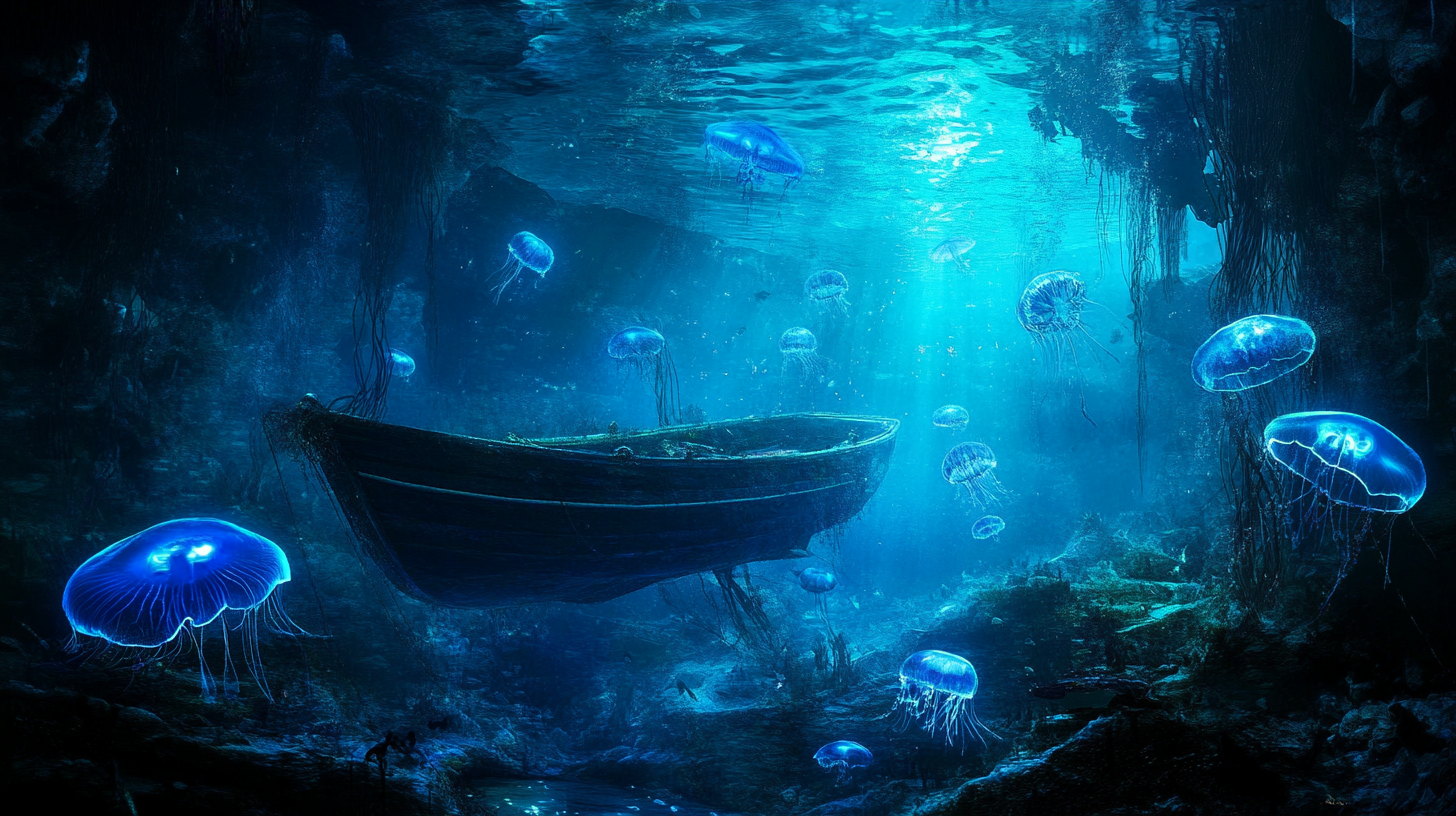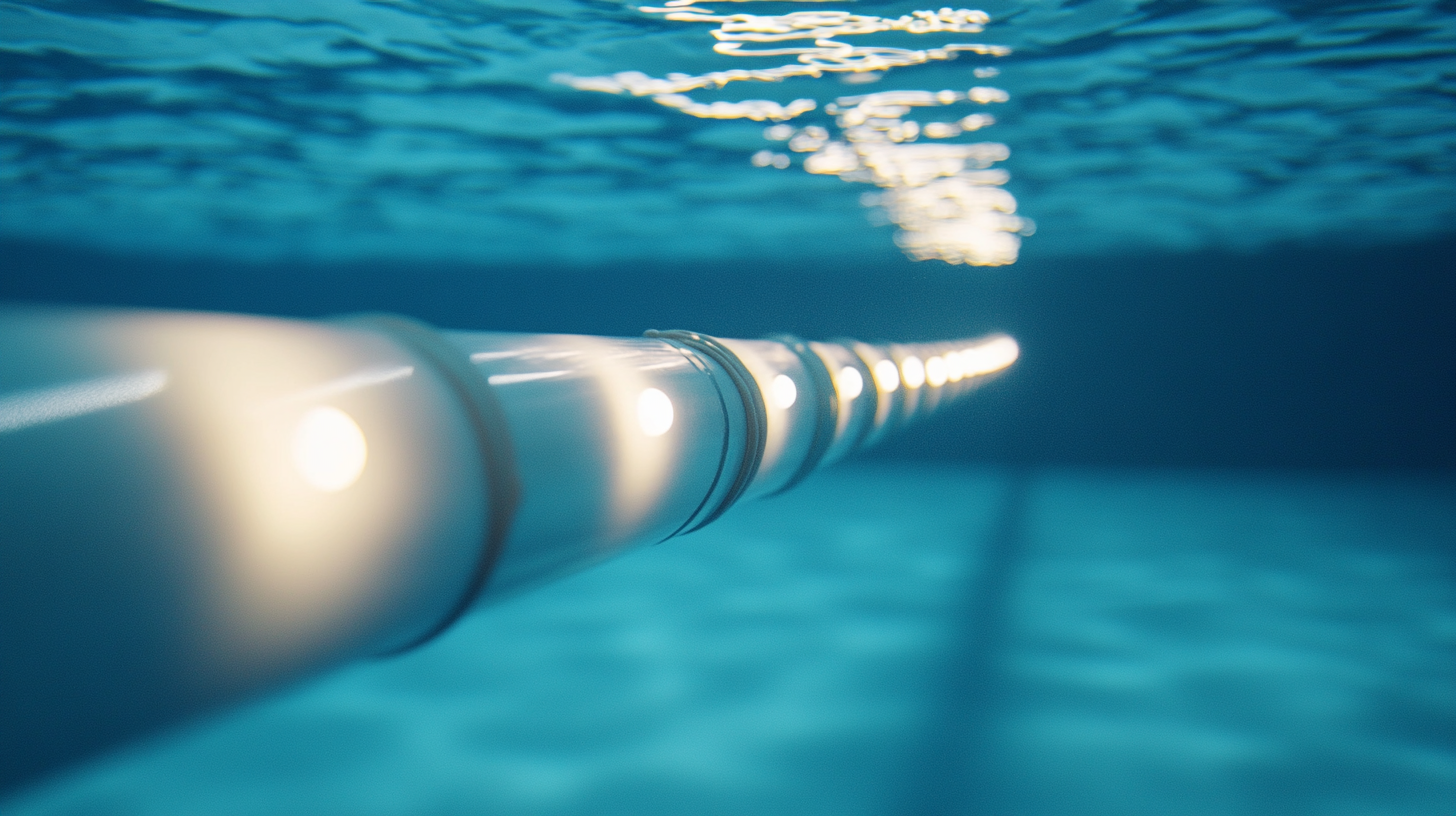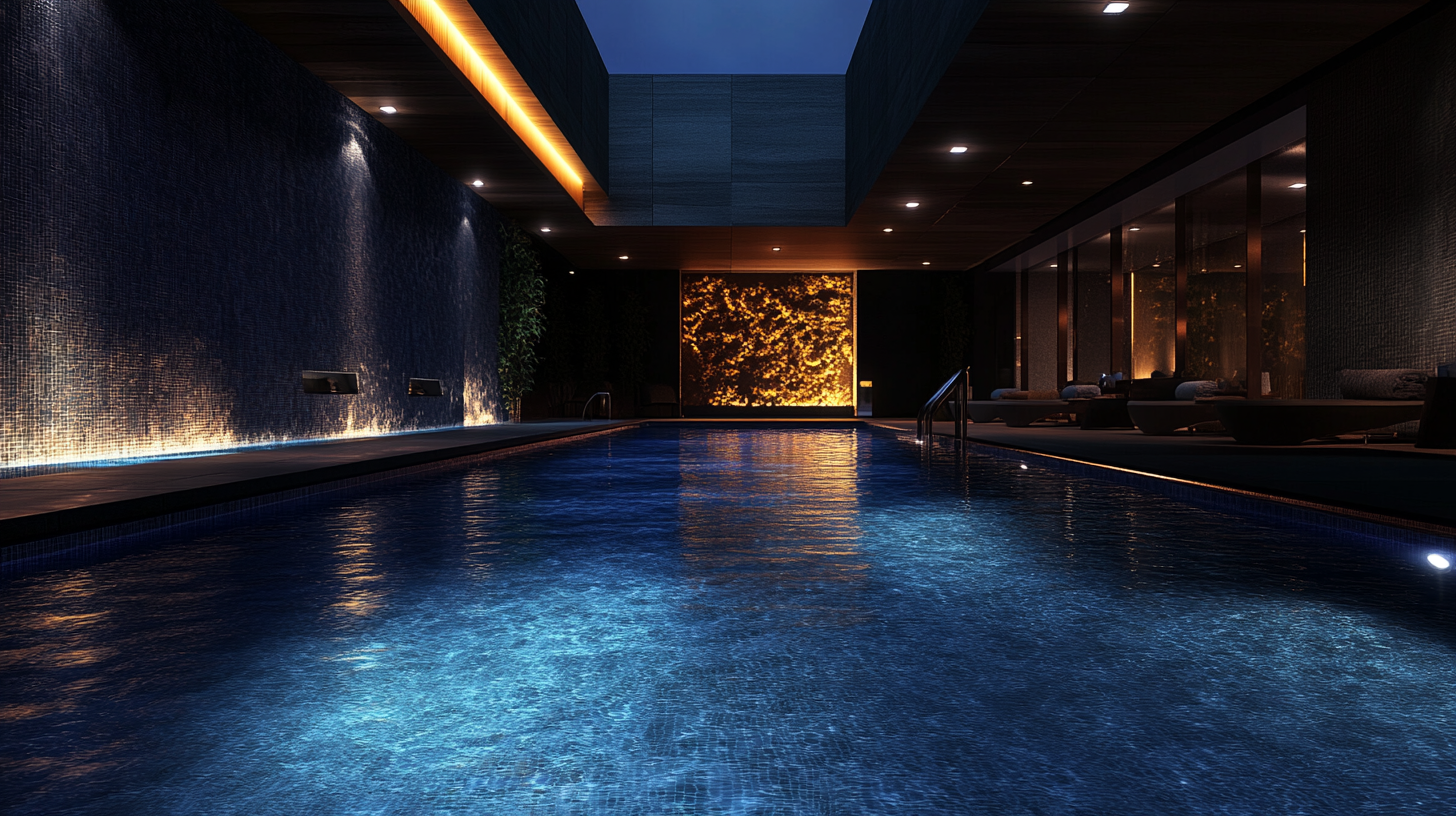How underwater boat lights can deter unwanted marine life
Marine life is drawn to light in fascinating ways, often triggered by their inherent survival instincts. The presence of underwater lights can alter their natural behavior, attracting curious creatures but also deterring others. Some species, particularly small fish and plankton, are attracted to the light as it mimics the reflection created by moonlight or sunlight penetrating the water’s surface. This can result in an increase in marine activity around light sources, which in turn can bring in larger predators looking for an easy meal.
However, not all marine life responds the same way. Some species, especially those accustomed to deeper, darker waters, will actively avoid illuminated areas, as their natural environment is typically low in light. This gives boaters the advantage when it comes to deterring wildlife they’d rather avoid, like jellyfish, certain types of sharks, or other potentially hazardous creatures. Understanding these behavioral patterns allows for a strategic use of underwater lights that not only enhances the visual appeal around your vessel, but also improves overall boating safety by keeping unwanted marine visitors at a distance. Keep in mind that different types of aquatic creatures may react differently depending on the strength, color, and placement of these lights.
The science behind light as a deterrent
Light as a deterrent is rooted in both biological and physical principles. Many aquatic creatures, especially nocturnal predators or those native to deep waters, possess highly sensitive eyes adapted to low-light conditions. When bright, concentrated light is introduced into their environment, it can overwhelm their vision or simply disturb their natural rhythms, encouraging them to turn away. This is particularly effective for deterring wildlife like squid or deep-water fish, who often rely on darkness to hunt or navigate their habitats. In contrast, overly illuminated areas may feel unnatural or threatening to them.
Furthermore, certain wavelengths of light can act as a deterrent due to creatures’ varied sensitivities to specific colors. For instance, research has shown that some species avoid blue or green lights while being indifferent to others. This understanding enables boaters to select underwater lights that maximize their boat’s protection by using just the right intensity, color, and wavelength. It’s not necessarily about blinding marine life, but more about creating an illuminated zone that feels uncomfortable or unnatural to them, encouraging them to avoid the area altogether, thus enhancing overall boating safety.
It’s important to note that light as a deterrent works most effectively in certain conditions, such as in darker waters or during nighttime excursions when the disparity between the boat’s light and the surrounding environment is much more pronounced. Over time, continuous exposure to bright lighting can make a location unattractive for certain marine creatures, reducing the chances of unexpected encounters with sea life that could pose risks or nuisances.
Best colors and wavelengths for repelling species
When it comes to deterring wildlife with underwater lights, color plays a significant role. Not every wavelength of light affects marine life in the same way. Various creatures have different visual sensitivities, and understanding how they respond to certain colors can help you choose the most effective lighting setup to keep unwanted marine visitors at bay.
Blue and green lights are among the most commonly used for underwater lighting, but their effects vary depending on the species you’re dealing with. Blue light, for instance, tends to penetrate deeper into the water and is often seen as less disruptive by many forms of marine life, making it an effective choice for attracting baitfish or smaller species without creating too much chaos in the ecosystem. However, just because smaller fish are drawn to blue light doesn’t mean all marine creatures will be as comfortable. Some species, especially squid and certain types of sharks, may actively avoid areas illuminated by intense blue light, making it a useful deterrent if you’re trying to keep larger and more imposing wildlife from getting too close to your vessel.
Green light is another popular option, primarily because it tends to attract plankton and, in turn, the smaller fish that feed on them. If your goal is fishing or simply creating vibrant marine displays around your boat at night, green lights might be a good choice. But in the context of improving boating safety, green light might attract a little too much unwanted attention, especially from jellyfish or other marine life you’d rather avoid. In these cases, experimenting with dimmer settings or different combinations of light colors may provide more peace of mind.
Red light is an interesting case, as it’s largely invisible to many kinds of aquatic wildlife. This could mean that using red lights in certain environments allows you to see what’s happening in the water while remaining unnoticed by creatures such as crabs, lobsters, and even some predator fish. For boats moving through delicate ecosystems, this is a bonus when it comes to reducing disturbance to the marine life around you. However, because red light does not travel as far in water compared to blue or green, it’s less effective in deep waters or murky conditions where visibility is already compromised.
Additionally, white light, especially when too bright, can create a blinding effect for marine life, making the area feel unnatural and unpleasant for some species. While this might sound like an obvious deterrent, prolonged exposure to bright white lights can also attract more curious species initially—an effect that subsides over time as the light becomes more associated with risk rather than opportunity. Strategically using white light in flashes or pulses can deter some species more effectively than leaving it on continuously.
Ultimately, the best approach might be to mix and match, adjusting your underwater boat lighting based on your specific needs and the type of marine life in the area. Whether you’re preventing certain species from coming too close or guiding others safely away, the color and intensity of your underwater lights can make all the difference in keeping your boating experience both safe and enjoyable.
Types of underwater lights for optimal results
There are several types of underwater lights available, each uniquely designed to meet different needs, whether for aesthetic enhancement, deterring wildlife, or ensuring boating safety. Choosing the right light largely depends on the marine environment, the targeted species you want to repel, and the specific purpose you intend to achieve.
One of the most popular categories is LED lights, known for their energy efficiency and long lifespan. LED underwater lights offer high brightness with minimal energy consumption, making them an ideal choice for boat owners interested in both aesthetics and performance. Their ability to operate at various light intensities and emit different colors also enhances their versatility. LED lights produce minimal heat, making them safer for prolonged use, especially in warmer waters where increased temperatures can influence marine behavior. Additionally, many LED systems come with smart control options, allowing boaters to adjust intensity and color to suit specific conditions — making them excellent for adapting to different marine environments whether you’re in clear tropical waters or murky coastal regions.
Halogen lights, another option, produce much more heat than LEDs and are less energy-efficient. However, they are often chosen for their ability to produce a bright, warm white light that penetrates deeper into the water, making them highly effective at deterring certain kinds of marine life that are sensitive to these wavelengths. Despite their declining popularity due to higher power consumption, halogen lights can be useful in situations where short bursts of bright light are needed to repel specific species. The downside is frequent maintenance and bulb replacement, compared to longer-lasting alternatives like LEDs.
High-Intensity Discharge (HID) lights represent an additional lighting category that delivers strong, focused beams underwater. HID lights are typically used in areas where deep penetration of light is required, such as for larger vessels or in extremely dark, open-ocean environments. These lights can be highly effective in deterring species that prefer deeper, dimly lit waters as the intense illumination becomes overpowering, forcing them to move away from the boat. The drawback of some HID systems is that they can be complex to install and maintain, particularly in smaller vessels not designed with heavy electrical demands in mind. Many boaters who seek extreme intensity for both visibility and protection from specific species favor HID setups, but they should be used judiciously to avoid unnecessary disruptions to sensitive ecosystems.
Fluorescent underwater lights, while not as powerful as LED or HID lights, offer a middle ground with good energy efficiency at a lower cost. These lights are also known for being gentle on the environment, making them a good choice for eco-conscious boaters. Fluorescents tend to emit a softer, more diffuse light, which makes them less likely to attract unwanted marine life compared to more intense lighting systems. However, because they lack penetrating power in deeper waters, they are best suited for shallow-water uses, such as around docks or for smaller crafts navigating coastal regions. Their milder illumination can certainly enhance boating safety without creating too much disturbance in the area.
Additionally, solar-powered underwater lights are becoming more popular due to their eco-friendly design and ease of installation. For boats that spend substantial time docked or moored in sunny locations, solar-powered systems provide a sustainable option. While these lights might not reach the brightness levels of wired alternatives, they are excellent for enhancing the ambiance around the boat without attracting too much attention from larger marine predators. Solar lights also reduce the boat’s reliance on battery power, giving more freedom for extended voyages where conserving energy is a priority.
Depending on the types of marine life you’re most focused on deterring, certain technological advancements can help in further refining your boat’s lighting system. Smart underwater lighting systems now offer programmable features, allowing you to change colors, intensities, and even the directional focus of the lights. Some of these systems also incorporate motion detection sensors, automatically adjusting the light when larger marine creatures are detected near the boat. This way, you initiate an instant deterrent tailored to repelling the approaching species, without constant manual adjustment. These technologically advanced options provide one of the most effective methods for protecting both your boat and the surrounding marine life, ensuring that wildlife remains undisturbed while also enhancing overall safety.
Finally, it’s essential to consider the mounting style of underwater lights. Flush-mounted lights offer a sleek profile, reducing drag and ensuring efficient operation even in high-speed boating scenarios, making them practical for active boaters looking to optimize performance without sacrificing lighting capabilities. Surface-mounted lights, on the other hand, are easier to install and maintain, often offering more flexibility in terms of positioning, which is advantageous if you want to create zones of illumination strategically placed to deter specific marine species.
In conclusion, selecting the right underwater lights for your boat depends on balancing the intensity, color, and type of installation with the goal of deterring unwanted marine life or enhancing your visual surroundings.
Environmental and ethical considerations
While underwater lighting systems can help boaters effectively deter wildlife, it’s essential to consider the environmental and ethical implications of using these technologies. Lighting can have a significant impact on the natural behavior of marine life, and improper use may unintentionally disrupt local ecosystems. Many aquatic species, including plankton, fish, and cephalopods, are highly sensitive to light, and prolonged exposure to artificial lighting could alter their migration patterns, feeding habits, and reproductive cycles. Disturbed ecosystems not only affect the immediate area around the light source but can ripple out to larger marine networks, causing imbalances in species populations and food chains.
To mitigate these impacts, it’s crucial to choose underwater lights that minimize ecological disruption while still being effective at deterring unwanted wildlife. For example, using lights with lower intensities, or light systems programmed to pulse rather than remain static, can help reduce the likelihood of long-term behavioral interference in marine species. Additionally, opting for colors and wavelengths that have less impact on non-targeted species—like red or soft green—demonstrates a more ecosystem-conscious approach while still maintaining boating safety standards.
Another important ethical consideration is to avoid over-illuminating areas, especially in fragile ecosystems such as coral reefs or seagrass beds. Excessive lighting can disrupt the nocturnal rhythms of marine life, including the photosynthesizing cycles of plants, which rely on a balance of light and darkness to thrive. Some regions, particularly protected marine sanctuaries, may have specific environmental regulations regarding the use of artificial light at night. Be sure to check with local authorities and respect these guidelines to avoid harming local wildlife or facing fines and penalties.
In addition to minimizing direct harm to individual creatures, considering the holistic health of the marine environment is essential. For instance, fluorescent and solar-powered lighting systems are often seen as more environmentally friendly alternatives due to their lower energy consumption. While they may offer softer illumination, these lights still perform well in shallow water conditions without contributing to water heating or excess glare, which can be harmful to sensitive species. Using energy-efficient lighting can also reduce a boat’s carbon footprint, taking a step toward more sustainable boating practices overall.
As more boaters opt for lighting systems to improve their nighttime marine experiences, adopting ethical and environmentally responsible practices becomes ever more important. It’s not only about ensuring that the lights effectively repel unwanted marine life, but also recognizing that as stewards of marine environments, boaters have a role to play in preserving the delicate balance of these ecosystems. Thoughtful decisions regarding light placement, intensity, and color will help ensure that harmful disruptions are kept to a minimum, allowing marine life to remain undisturbed while offering enhanced boating safety for those aboard.


